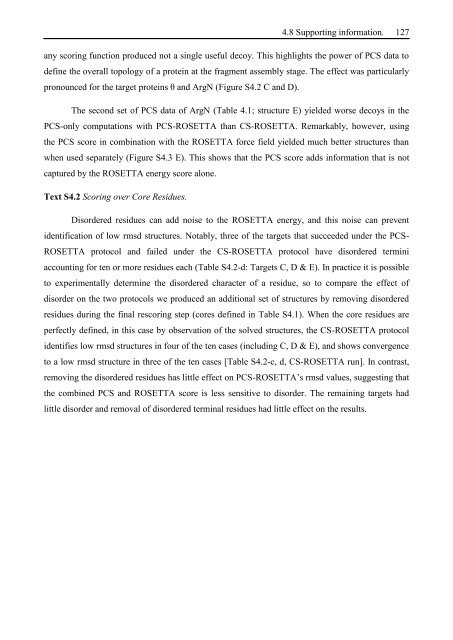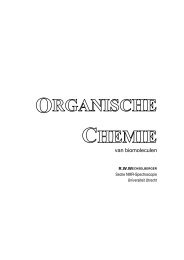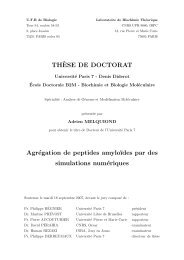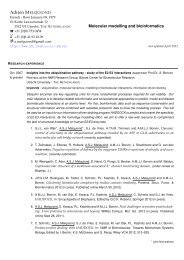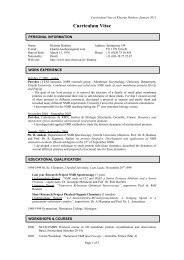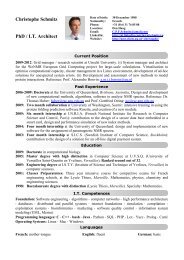Thesis Title: Subtitle - NMR Spectroscopy Research Group
Thesis Title: Subtitle - NMR Spectroscopy Research Group
Thesis Title: Subtitle - NMR Spectroscopy Research Group
You also want an ePaper? Increase the reach of your titles
YUMPU automatically turns print PDFs into web optimized ePapers that Google loves.
4.8 Supporting information. 127<br />
any scoring function produced not a single useful decoy. This highlights the power of PCS data to<br />
define the overall topology of a protein at the fragment assembly stage. The effect was particularly<br />
pronounced for the target proteins θ and ArgN (Figure S4.2 C and D).<br />
The second set of PCS data of ArgN (Table 4.1; structure E) yielded worse decoys in the<br />
PCS-only computations with PCS-ROSETTA than CS-ROSETTA. Remarkably, however, using<br />
the PCS score in combination with the ROSETTA force field yielded much better structures than<br />
when used separately (Figure S4.3 E). This shows that the PCS score adds information that is not<br />
captured by the ROSETTA energy score alone.<br />
Text S4.2 Scoring over Core Residues.<br />
Disordered residues can add noise to the ROSETTA energy, and this noise can prevent<br />
identification of low rmsd structures. Notably, three of the targets that succeeded under the PCS-<br />
ROSETTA protocol and failed under the CS-ROSETTA protocol have disordered termini<br />
accounting for ten or more residues each (Table S4.2-d: Targets C, D & E). In practice it is possible<br />
to experimentally determine the disordered character of a residue, so to compare the effect of<br />
disorder on the two protocols we produced an additional set of structures by removing disordered<br />
residues during the final rescoring step (cores defined in Table S4.1). When the core residues are<br />
perfectly defined, in this case by observation of the solved structures, the CS-ROSETTA protocol<br />
identifies low rmsd structures in four of the ten cases (including C, D & E), and shows convergence<br />
to a low rmsd structure in three of the ten cases [Table S4.2-c, d, CS-ROSETTA run]. In contrast,<br />
removing the disordered residues has little effect on PCS-ROSETTA’s rmsd values, suggesting that<br />
the combined PCS and ROSETTA score is less sensitive to disorder. The remaining targets had<br />
little disorder and removal of disordered terminal residues had little effect on the results.


